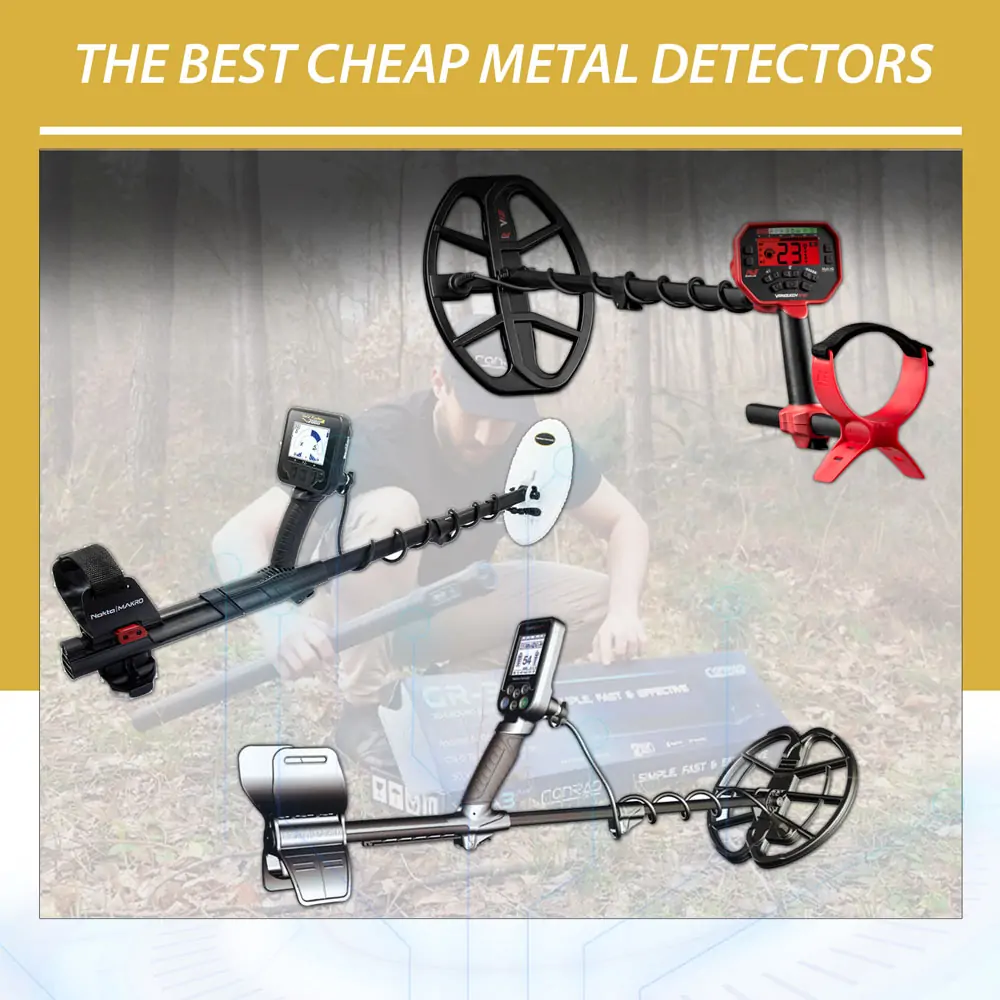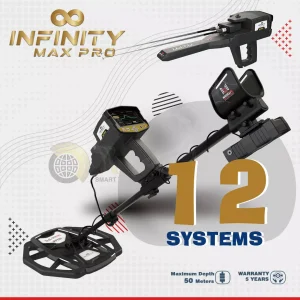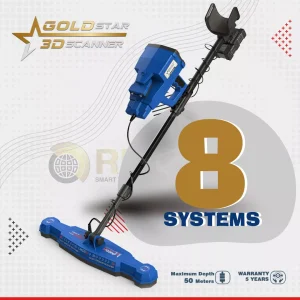Best Cheap Metal Detectors 2022
There are so many options when it comes to purchasing a new metal detector. Where do you start? The first step to figuring out what metal detector is best for you is deciding on a budget. Many people who are beginners decide they want to start off with a low-budget, cheap metal detector and work up from there. Although they are referred to as cheap metal detectors, these detectors can offer great quality and performance.
It all depends on what you plan on detecting. If you’re just getting started in the metal detecting world, these affordable options are perfect. As a beginner, you may not want all the bells and whistles some of the higher-end machines have. On the other hand, you want one that works well and leads you to treasure! Both beginners and pros alike can benefit from recommendations.
Different metal detectors are better at some things than others. In essence, metal detecting is easy — wave the search coil over the ground and dig when it beeps! Unfortunately, the “dig everything that beeps” approach can lead to a lot of needless digging, missed targets, and a mountain of pop tabs.
If you’re looking specifically for gold, for example, you’ll want a completely different detector than if you were scuba diving or metal detecting on a beach.
All-purpose entry-level machines cannot detect small gold nuggets or flakes, but they will find enough coins, jewelry, and relics to keep a beginner busy and enthusiastic.
Whether you’re a beginner or are looking for a cheap backup metal detector, we hope this guide will help you determine which machine is best for you. We’ve tried to combine quality with affordability, so while there may be cheaper detectors out there, they may not be the best for the job.
Metal Detector Technology Basics
The main elements of a metal detector include the body of the machine, a control box, and one or more search coils. It’s the coil that transmits an electromagnetic field into the ground. When that magnetic field encounters an object, it sends a signal to the coil and creates a sound.
Some detectors make a different sound depending on what type of object has been detected.
You can swap out a coil and replace it with one that is more sensitive or one that can search deeper. The larger the coil, the deeper in-depth it can detect, but it can also lose sensitivity to smaller objects. Smaller coils tend to have higher sensitivity but can’t detect as far down.
Each brand of metal detector markets its own coils, so best to purchase coils from the original manufacturer.
Detectors primarily use one of three technologies: Very low frequency (VLF), Pulse induction (PI), or Multi. Multi means you can hear more than one frequency at once.
VLF is like having a conversation with someone but with frequent interruptions. The VLF coil is the transmitter and the coiled wire is like an antenna that sees a target in the ground and amplifies the sound to let you know there is a signal.
A VLF machine will have two coils — the transmitter coil and the receiver coil. Electricity is sent to the transmitter coil, which is the outer loop, in one direction and then the other.
Cheap metal detectors as well as other advanced metal detectors, work on the principle of transmitting a magnetic field and analyzing a return signal from the target and environment.
The changing magnetic field causes electric currents to flow in metal objects. Most machines use VLF technology.
PI works much differently. A transmit voltage is applied to a transmit coil, which then creates a transmitted magnetic field.
When that magnetic field is suddenly turned off, the metal detector measures a received signal produced by a magnetic field from the environment.
Compared to VLF, PI is like a steady conversation. The PI coil is both the transmitter and receiver. It sends a constant signal to the ground without the interruptions that a VLF detector has.
Best Cheap Metal Detector for Coins, Rings, and Jewelry Detecting
If you’re coin hunting or looking for rings or other types of jewelry, search areas with high traffic. Parks, beaches, schools, churches, even sports and complexes, and bleachers are great places to look for things like this. Some of the very best locations for coin hunters are places that are abandoned today but were very busy in the past.
When you shop for a metal detector for coins, rings, or jewelry, choose one that’s easy to use and has good target separation or discrimination.
That allows you to filter out what you don’t want. Parks mean you have a high chance of finding coins and jewelry, but these areas also have a lot of junk like foil and pull tabs.
Some machines include a feature called notch discrimination, which is very useful for this kind of hunting. That allows you to pick a target and filter out everything else that is outside that target’s feedback range.
Choose a machine with a frequency of 10-15 kHz and a depth range of 6-8 inches. Some of the best cheap metal detectors for coins, rings, and jewelry detecting are the Garrett ACE 400 or the Nokta Makro Simplex.
Best Cheap Metal Detector for Relic Hunting
Relics are a big draw for metal detecting enthusiasts. There are relics scattered across the world from past wars and other historical events, and it can be very exciting to uncover a colonial buckle or part of a musket. This is where metal detecting meets archaeology and true history buffs thrive!
The best places to search for relics include churches, old homesites, and areas where people used to congregate in the past. Think about abandoned train depots, large trees in the middle of town square — commonly referred to in the hobby as a money tree — and old steamboat landings.
To be an effective relic hunter, you’ll want a tough, rugged machine, because you can wind up pretty far off the beaten path.
The main features prized by relic hunters include good target separation. This is important because coins can be masked by old construction materials like nails or railroad spikes. Highly effective discrimination is important because you need to kill the audio for iron targets and focus on what’s valuable.
A good relic machine should have a depth range of 12-14 inches and use a frequency between 12-15 kHz. To be effective, you’ll probably want more than one coil. Coils that are a minimum of 12 inches wide allow you to detect at deeper depths, which is important when hunting for relics. Waterproof coils are an important feature to look for as well because you never know what terrain you’ll encounter when you’re out looking for historical locations deep in the woods.
A machine that has a true all-metal mode or zero discrimination is useful if you’re not on an old homesite because many Civil War relics tend to ring up as iron. Horseshoes, railroad spikes and shell fragments would be not be heard, for example, if your discrimination settings are too high.
Many top-performing relic machines are fairly heavy, so consider a harness or guide to help you distribute the weight.
We recommend the Minelab Vanquish 340 for this category. The Vanquish is Minelab’s newest metal detector and features the combined power of multiple detectors in one. It includes a 12-inch coil, a customizable frequency range settings and a red LED backlight. The Vanquish is available in other models as well, including the 440, 540 and Pro Pack.
Important articles :
The best and most accurate gold detectors around the world
Metal Detector for Sale 2022
Is it possible to detect gold without a device?
Best Metal Detector for Gold and Silver 2022
Professional Metal Detector
Cheapest Gold Detector 2022
The most important methods of prospecting for gold
Best Metal Detector 2022
Gold Detector Price 2022
3D Imaging Gold Detector



